Womblin' 5: The Adventures of Tom Wombledrill
Every now and again while walking around, I stumble across some discarded hardware that deserves a second chance at life. I remember when my Dad told me as a kid "If you want to womble some hardware, make a noise like a screwdriver. Then when the hardware comes by you womble it." Works pretty good until you try to figure out what kind of noise a screwdriver makes.
In the happy little treehouse today, a double feature: this slightly-long-in-the-tooth Makita "BHP460" 24v NiMH cordless drill and its positively sabre-toothed great grandfather, a Lightburn "502A" dual-speed corded drill.
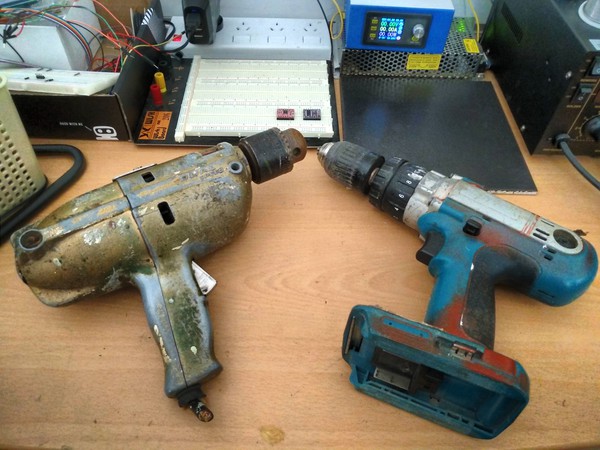
You know the, uh... rules, fellas. I want a nice clean bout. No gouging, no milling, protect your eyes and ears at all times, and if you need to press that hard you should really sharpen or replace the bit because you're just going to wear out the motor if you keep that up.
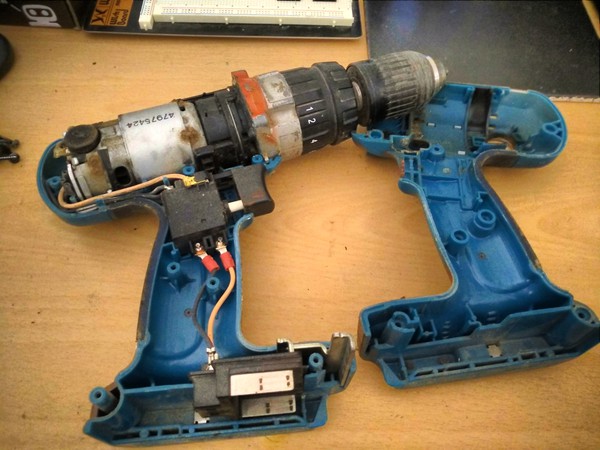
The Makita only had a few front and side screws to descrew and the case popped right off. Inside was an ode to Japanese minimalism: just a planetary gear assembly, a brushed DC motor, a trigger, and a little battery connector. I believe it was the famous Japanese emperor Sun Tzu who said "perfection is achieved, not when you have nothing to add, but when you stop trying to sprinkle Eastern mysticism on totally unrelated stuff", adding, "seriously, what does medieval combat have to do with your situation? Are you listening to yourself right now?"
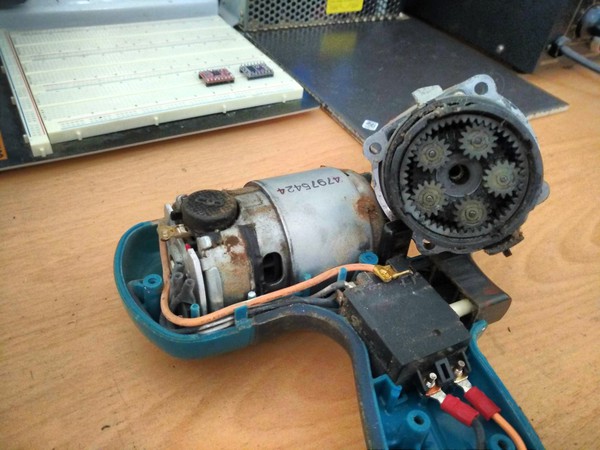
Like generations of noble Samurai before me, I doffed my fedora and sliced the planetary gear assembly from the motor in one devastating stroke. If you're following along at home, be sure to accidentally drop tiny gears everywhere because they roll exceptionally well and it's a fun game to try to find them again.
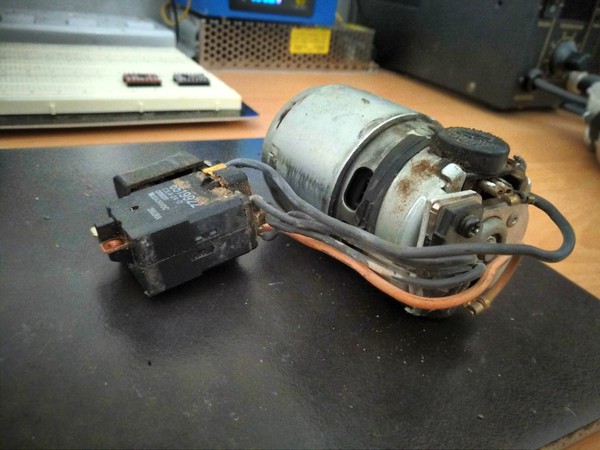
The trigger revealed something interesting, though: what are all those extra wires for? And what's that stuck on the back of the motor there? Could it be... a MOSFET? It is! A big beefy 2SK2690. That trigger mechanism isn't some basic switch, but a highly woke and intellectual pulse wave generator. I had to check it out, so I phoned a friend.
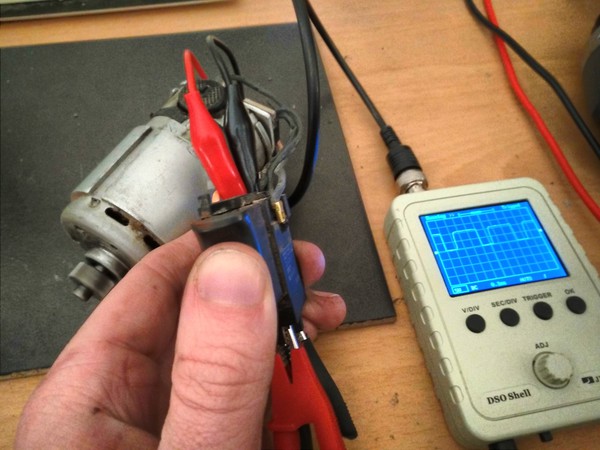
And by friend I of course mean oscilloscope. Check it out! That's a 2.5KHz pulse wave, and even though I only ran it at an anaemic 12 volts it was still surprisingly studly. Nice motor, even nicer trigger mechanism.
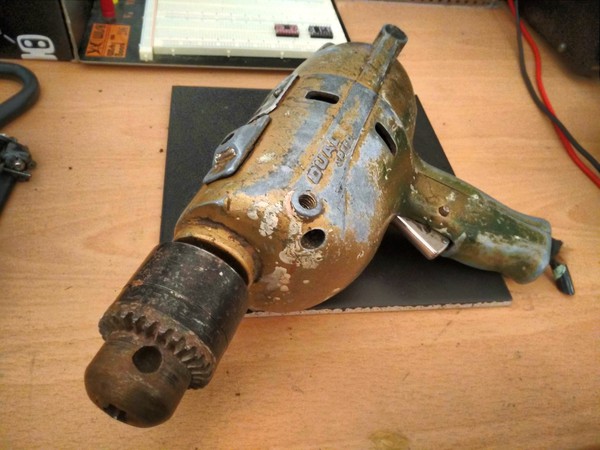
So I was excited to see what the ole dog had to say. I actually found a pretty spectacular catalogue page that dates it to sometime in the 60s or 70s. This thing is half a century old, weighs about 5kg, and looks like it was stolen from Flash Gordon's toolshed. It's amazing.
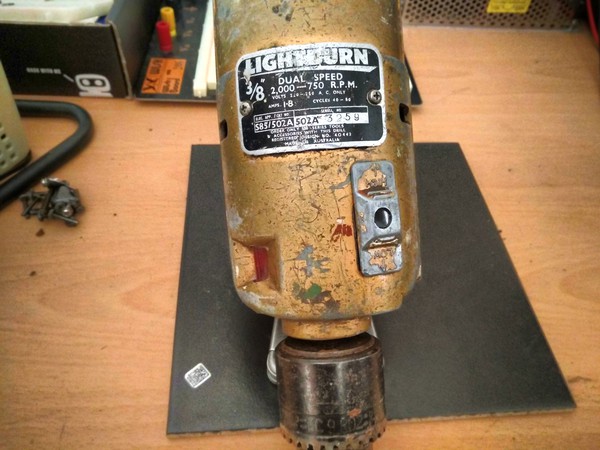
Here's a nice shot of the nameplate, speed switch, and a spirit level that I can only assume is full of a 1970s-safety-compliant mix of mercury, arsenic, and malted asbestos. So far so good, let's open it up and see what's inside.
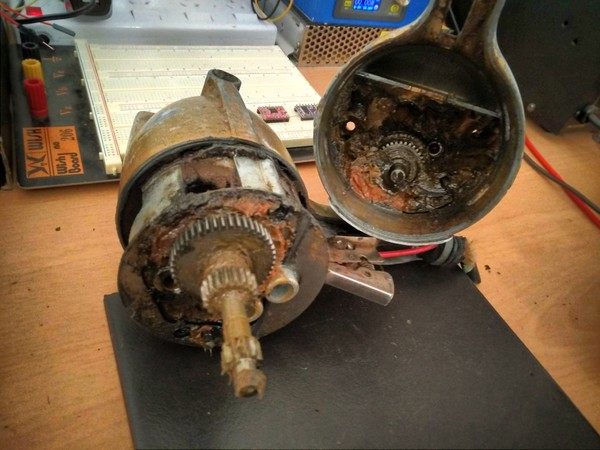
Mother of god. That's some nasty grease. I tried to block out the smell of lithium and concentrate on that awesome trigger switch. Sure, that young switch might be firmer, more environmentally conscious, and able to get off the couch without grunting, but can it give you the satisfying mechanical clunk of a trigger clearly designed for launching Sidewinders at the commies?
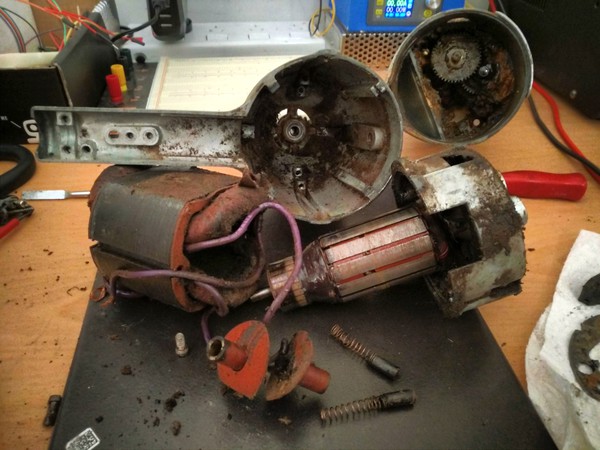
Much scraping later I excavated the rotor, stator and brushes from their liquefied dinosaur graves. I considered trying to get it to run, but I figured it might be better not to mess around with unearthed mains tools of questionable provenance. Its drilling days are probably well behind it, but I think it could have a fulfilling retirement as a prop laser gun. Just need to clear all that grease out.
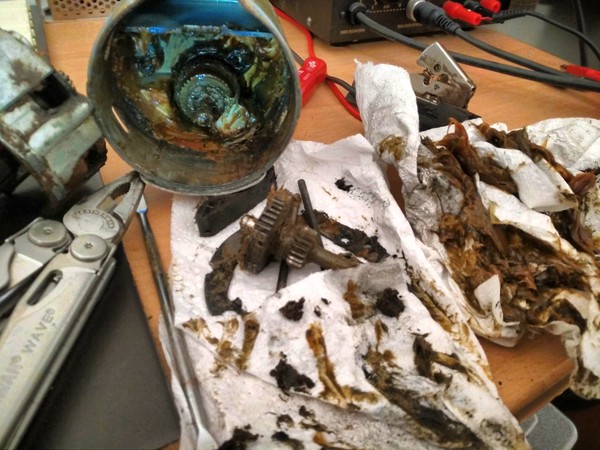
Ew.
What I found most interesting about these two drills was how they were totally different designs, but both so simple. I see this as a great example of engineers fitting the solution to the domain. Because the motor type matched the power source, there was no need for power management. Both drills had speed control, but electronic speed control used to be complex and expensive, so papa drill just did it with a gear selector. The modern drill is lightweight, perfect for the modern typist-handyman, while the classic is solid steel, suited for both drilling and post-apocalyptic shelter combat.
So, all in all, two drills both alike in dignity, from ancient sludge to newfangled machinery, whose greasy parts my greasy hands can't clean. Seriously, this shit is everywhere. If you'll excuse me, I need a shower. And then my shower needs a shower.